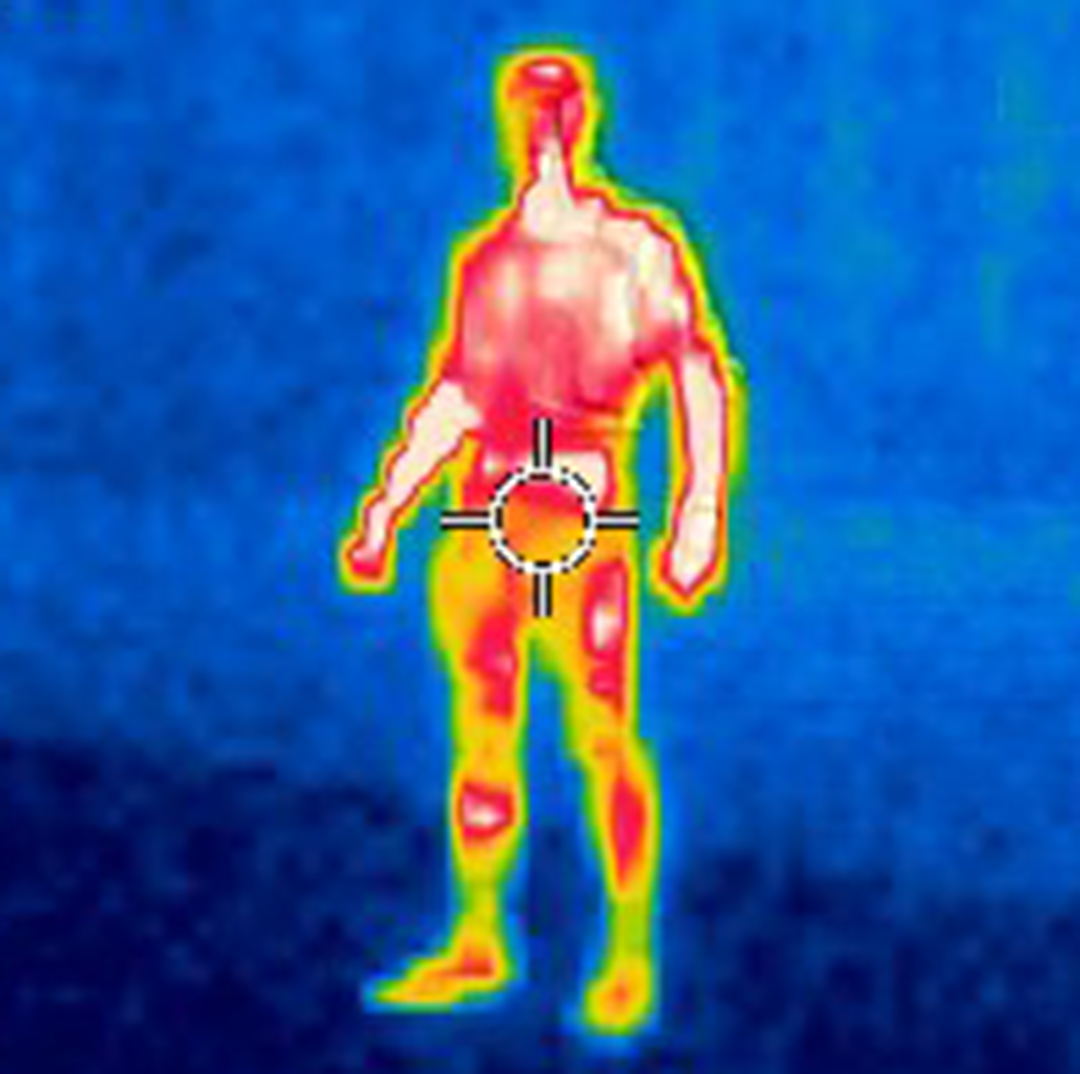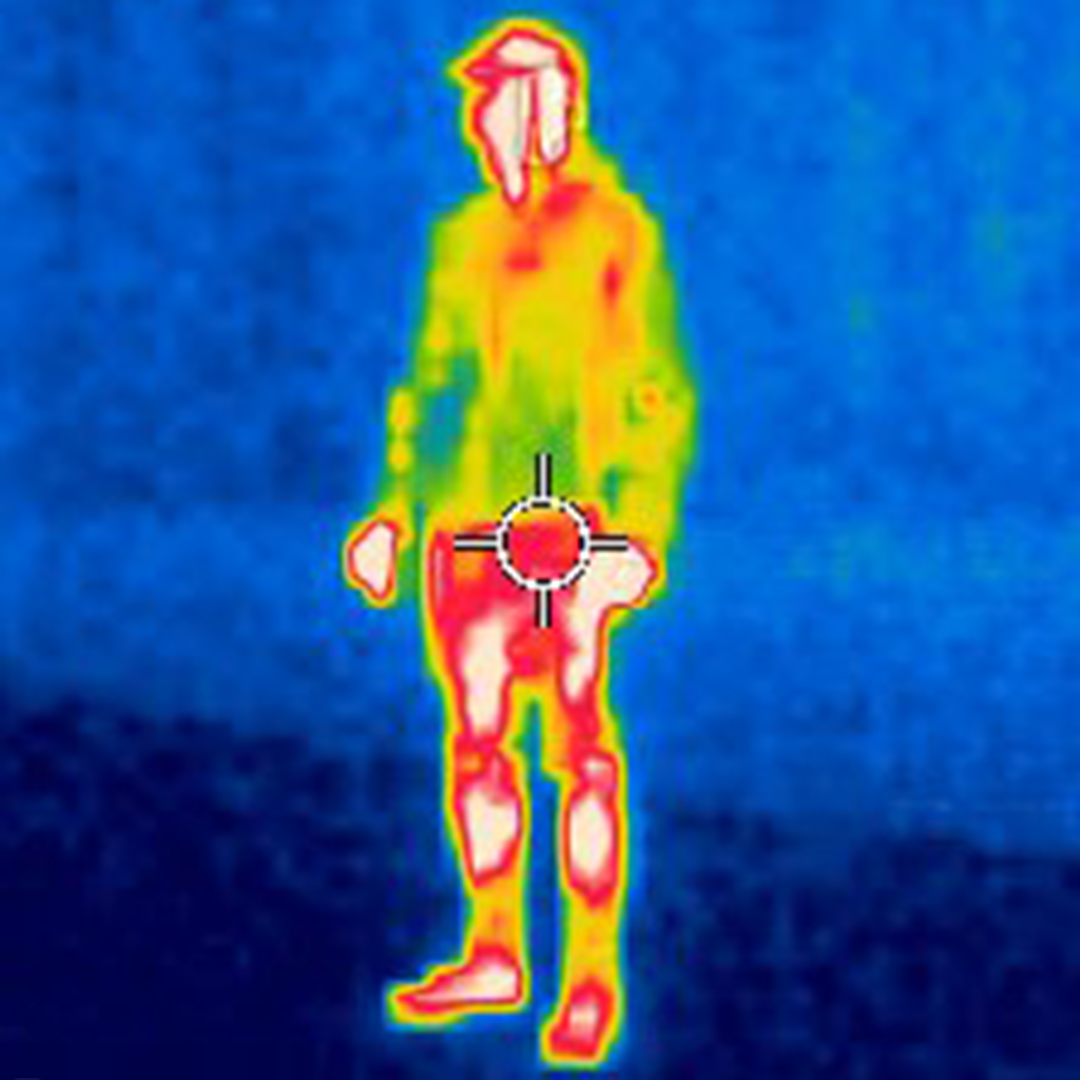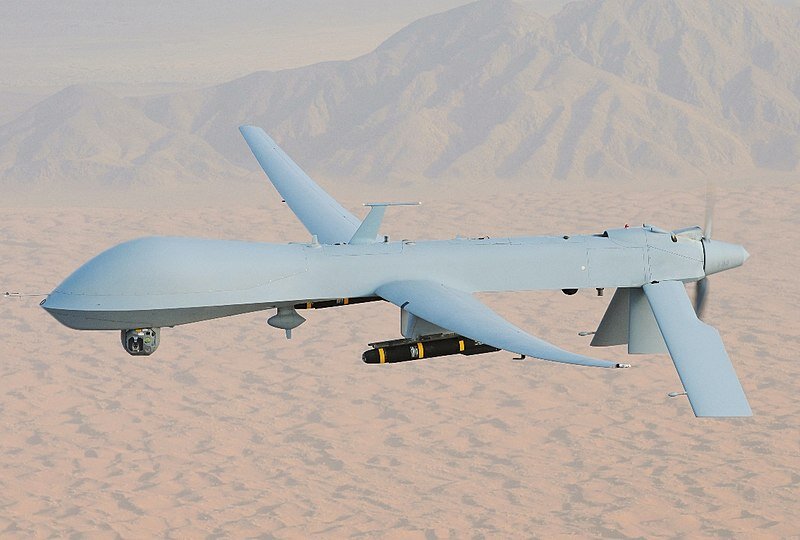Readymade Thermal Obfuscation - A few quick tests with a consumer product.
Much like the rest of the internet, a few weeks ago I was caught up in the beautiful FREKVENS line, which was a line of Bluetooth speakers and sound-reactive lights offered through Ikea but largely designed by the prolific Teenage Engineering. I went to my local furniture maze / Ikea and perused the lineup, and while there found the $25 FREKVENS Raincoat, which is a poncho style raincoat that looks straight out of a 50’s scifi movie. It’s made out of metalized polyethylene, which makes the raincoat reflective and quite shiny. However, some metalized fabrics have an interesting property where they also are quite good at reflecting IR radiation (heat). IR Radiation is typically what thermal imaging systems nowadays pick up on. With that in mind I purchased one and decided to give that property a test.
After pinging my makerspace’s internal email list, I was lent a high quality thermal imaging camera (FLIR E4) to play around with. After shooting a few tests with it, the results were pretty stark.
These photos were taken outside, with the jackets given time to be worn between tests to allow for some body heat to enter their material. As you can see, with the Frekvens coat on, my torso is almost completely voided out in the sensor of the FLIR camera. At $25 and available at locations throughout the country, it serves as a compelling entry-point for those that would want to obscure themselves from thermal vision.
With that in mind though, why would anyone care about blocking themselves from this sort of technology? It is somewhat rare after all and cannot be used in the same ways as a traditional visible light camera might be.
Well, the thing is, if you’re in the sights of a thermal imaging camera, chances are you’re in for a whole world of hurt. Thermal imaging systems are typically used in Military systems, notably in sensor suite of General Atomic’s MQ-1 Predator Drone.
Thermal sensors are used in these ways as they can pick out targets that are traditionally camouflaged as if they were not, and are very effective where single or small groups of people may be throughout the landscape. This has also lead to their rapid adoption by border enforcement agencies, where spotting someone in the distance in the dead of night would be invaluable. In fact FLIR, the same company that makes the thermal imaging camera used to test the Frekvens coat, sells entire systems for this purpose.
That’s all for now. Stay obscured out there ya’ll.
Mac





